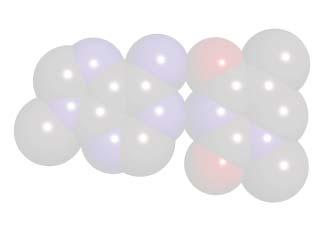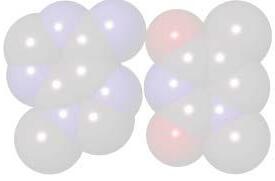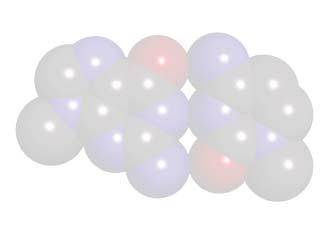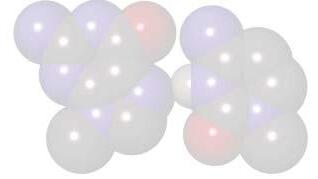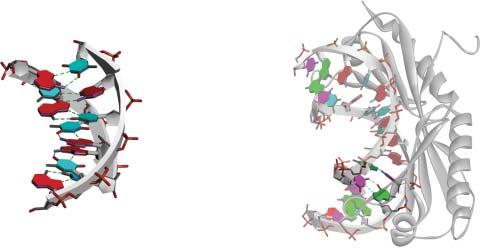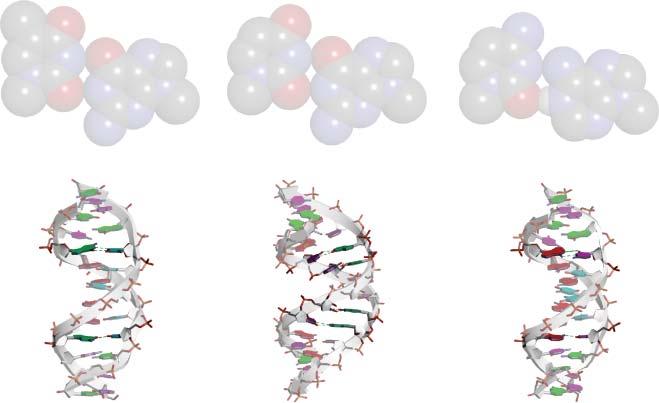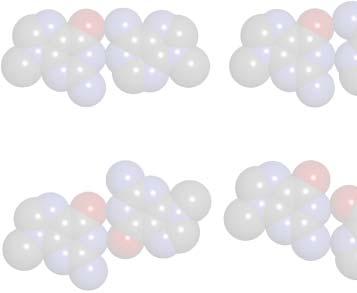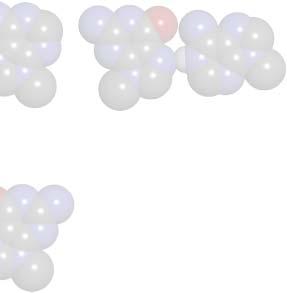Chemistry and Biology of Non-canonical Nucleic Acids 1st Edition Naoki Sugimoto
Visit to download the full and correct content document: https://ebookmass.com/product/chemistry-and-biology-of-non-canonical-nucleic-acids -1st-edition-naoki-sugimoto/

More products digital (pdf, epub, mobi) instant download maybe you interests ...

Connecting Gospels: Beyond the Canonical/Non-Canonical Divide Francis Watson
https://ebookmass.com/product/connecting-gospels-beyond-thecanonical-non-canonical-divide-francis-watson/
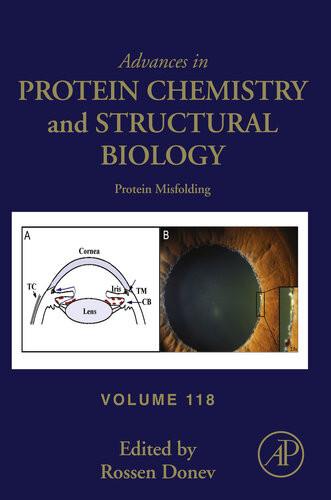
Advances in Protein Chemistry and Structural Biology: Protein Misfolding Donev
https://ebookmass.com/product/advances-in-protein-chemistry-andstructural-biology-protein-misfolding-donev/

Principles of Cancer Biology 1st Edition
https://ebookmass.com/product/principles-of-cancer-biology-1stedition/

Hydrodynamic Lubrication of Non-Newtonian Fluids Ping
Huang
https://ebookmass.com/product/hydrodynamic-lubrication-of-nonnewtonian-fluids-ping-huang/
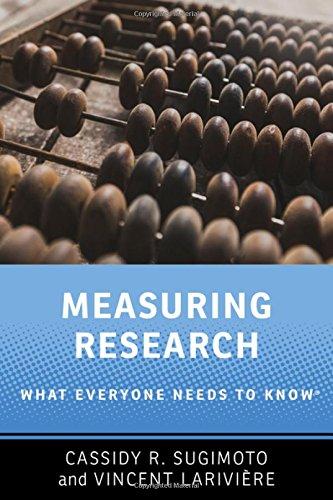
Measuring Research: What Everyone Needs to Know® 1st Edition Cassidy R. Sugimoto
https://ebookmass.com/product/measuring-research-what-everyoneneeds-to-know-1st-edition-cassidy-r-sugimoto/

Non-Covalent Interactions in Quantum Chemistry and Physics. Theory and Applications 1st Edition Edition Alberto Otero De La Roza And Gino A. Dilabio (Eds.)
https://ebookmass.com/product/non-covalent-interactions-inquantum-chemistry-and-physics-theory-and-applications-1stedition-edition-alberto-otero-de-la-roza-and-gino-a-dilabio-eds/

Biology of Cardiovascular and Metabolic Diseases 1st Edition Chaya Gopalan
https://ebookmass.com/product/biology-of-cardiovascular-andmetabolic-diseases-1st-edition-chaya-gopalan/

Comprehensive Glycoscience: From Chemistry to Systems Biology 2nd Edition Joseph Barchi (Editor)
https://ebookmass.com/product/comprehensive-glycoscience-fromchemistry-to-systems-biology-2nd-edition-joseph-barchi-editor/
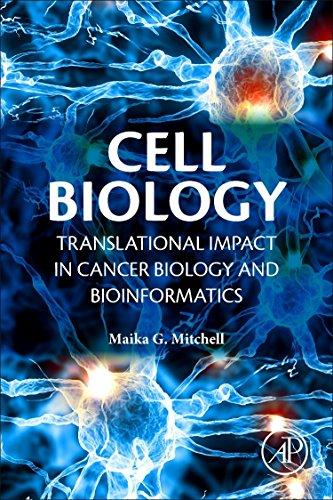
Cell biology : translational impact in cancer biology and bioinformatics 1st Edition Mitchell
https://ebookmass.com/product/cell-biology-translational-impactin-cancer-biology-and-bioinformatics-1st-edition-mitchell/

ChemistryandBiologyofNon-CanonicalNucleicAcids
ChemistryandBiologyofNon-Canonical NucleicAcids
NaokiSugimoto
Author
Prof.NaokiSugimoto KonanUniversity
FrontierInstituteforBiomolecularEngineering
7-1-20
Minatojima-minamimachi 650-0047Kobe
Japan
Allbookspublishedby Wiley-VCH arecarefully produced.Nevertheless,authors,editors,and publisherdonotwarranttheinformationcontained inthesebooks,includingthisbook,tobefreeof errors.Readersareadvisedtokeepinmindthat statements,data,illustrations,proceduraldetails,or otheritemsmayinadvertentlybeinaccurate.
LibraryofCongressCardNo.: appliedfor
BritishLibraryCataloguing-in-PublicationData Acataloguerecordforthisbookisavailablefromthe BritishLibrary.
Bibliographicinformationpublishedbythe DeutscheNationalbibliothek TheDeutscheNationalbibliothekliststhis publicationintheDeutscheNationalbibliografie; detailedbibliographicdataareavailableonthe Internetat<http://dnb.d-nb.de>.
©2021WILEY-VCHGmbH,Boschstr.12,69469 Weinheim,Germany
Allrightsreserved(includingthoseoftranslation intootherlanguages).Nopartofthisbookmaybe reproducedinanyform–byphotoprinting, microfilm,oranyothermeans–nortransmittedor translatedintoamachinelanguagewithoutwritten permissionfromthepublishers.Registerednames, trademarks,etc.usedinthisbook,evenwhennot specificallymarkedassuch,arenottobeconsidered unprotectedbylaw.
PrintISBN: 978-3-527-34521-2
ePDFISBN: 978-3-527-81788-7
ePubISBN: 978-3-527-81786-3
oBookISBN: 978-3-527-81785-6
Typesetting SPiGlobal,Chennai,India PrintingandBinding
Printedonacid-freepaper
10987654321
Contents
Preface xi
1HistoryforCanonicalandNon-canonicalStructuresofNucleic Acids 1
1.1Introduction 1
1.2HistoryofDuplex 1
1.3Non-Watson–CrickBasePair 5
1.4NucleicAcidStructuresIncludingNon-Watson–CrickBasePairs 7
1.5PerspectiveoftheResearchforNon-canonicalNucleicAcid Structures 8
1.6ConclusionandPerspective 9 References 9
2StructuresofNucleicAcidsNow 11
2.1Introduction 11
2.2UnusualBasePairsinaDuplex 11
2.2.1HoogsteenBasePair 13
2.2.2Purine–PyrimidineMismatches 13
2.2.3Purine–PurineMismatches 14
2.2.4Pyrimidine–PyrimidineMismatches 16
2.3Non-canonicalBackboneShapesinDNADuplex 17
2.4BranchedDNAwithJunction 19
2.5Multi-strandedDNAHelices 20
2.6StructuresinRNA 20
2.6.1BasicStructureDistinctionsofRNA 20
2.6.2ElementsinRNASecondaryStructures 21
2.6.2.1HairpinLoop 22
2.6.2.2BulgeLoop 22
2.6.2.3InternalLoop 23
2.6.3ElementsinTertiaryInteractionsofRNA 24
2.6.3.1A-MinorInteractions 25
2.6.3.2RiboseZipper 25
2.6.3.3T-LoopMotif 26
2.6.3.4Kissing-LoopInteraction 26
2.6.3.5GNRATetraloopReceptorInteraction 27
2.6.3.6PseudoknotCrosslinkingDistantStemRegions 29
2.7Conclusion 29
References 30
3StabilityofNon-canonicalNucleicAcids 33
3.1Introduction 33
3.2FactorsInfluencingStabilitiesoftheCanonicalDuplexes 34
3.2.1HydrogenBondFormations 34
3.2.2StackingInteractions 35
3.2.3ConformationalEntropy 35
3.3ThermodynamicAnalysisfortheFormationofDuplex 36
3.4FactorsInfluencingStabilitiesoftheNon-canonicalNucleicAcids 39
3.4.1FactorsInfluencingStabilityofTriplexes 39
3.4.2FactorsInfluencingStabilityofQuadruplex 42
3.4.2.1G-Quadruplexes 42
3.4.2.2i-Motif 44
3.5ThermodynamicAnalysisfortheNon-canonicalNucleicAcids 45
3.5.1ThermodynamicAnalysisfortheIntramolecularTriplexand Tetraplex 45
3.5.2ThermodynamicAnalysisfortheIntermolecularTriplex 45
3.5.3ThermodynamicAnalysisfortheTetraplex 46
3.6Conclusion 48 References 49
4PhysicochemicalPropertiesofNon-canonicalNucleic Acids 51
4.1Introduction 51
4.2SpectroscopicPropertiesofNon-canonicalNucleicAcids 51
4.2.1EffectofNon-canonicalStructureonUVAbsorption 51
4.2.2CircularDichroismofNon-canonicalNucleicAcids 53
4.2.3NMRSpectroscopy 56
4.2.4OtherSpectroscopicCharacteristicsofNon-canonicalNucleicAcids 57
4.3ChemicalInteractionsonNon-canonicalNucleicAcids 59
4.3.1Hydration 59
4.3.2CationBinding 61
4.3.3pHEffect 62
4.3.4ChemicalModification 63
4.4ChemicalPlatformontheNon-canonicalStructures 64
4.4.1SpecificityofaLigandtoNon-canonicalStructures 64
4.4.2FluorescencePlatformofNon-canonicalStructures 67
4.4.3InterfaceBetweenProteinsandNucleicAcids 68
4.5PhysicochemicalPropertyofNon-canonicalNucleicAcidsinCell 69
4.5.1MolecularCrowdingConditionthatReflectsCellularEnvironments 69
4.5.2EffectsofCrowdingReagentsonNon-canonicalNucleicAcid Structures 70
4.5.3QuantificationofPhysicalPropertiesofNon-canonicalStructuresin CrowdingCondition 71
4.5.4Non-canonicalStructuresUnderMimickingOrganelleEnvironment 72
4.5.5InsightfortheFormationofNon-canonicalNucleicAcidsinCells 73
4.6Conclusion 75 References 75
5Telomere 79
5.1Introduction 79
5.2StructuralPropertiesofTelomere 79
5.2.1StructuresofTelomere 79
5.2.2StructuralPropertiesofHumanTelomericG4s 81
5.2.3StructureofRepeatsofHumanTelomericG4s 84
5.3BiologicalRelevanceofTelomereG4 86
5.3.1TelomeraseActivity 86
5.3.2TelomeraseRepeatedAmplificationProtocol(TRAP)Assay 89
5.3.3AlternativeLengtheningofTelomere(ALT)Mechanism 89
5.4OtherNon-canonicalStructuresRelatedtoTelomereRegion 89
5.4.1Telomerei-Motif 89
5.4.2TelomereRNA 90
5.5Conclusion 92 References 93
6Transcription 95
6.1Introduction 95
6.2TranscriptionProcess 96
6.2.1TranscriptionInitiation 96
6.2.2TranscriptionElongation 98
6.2.3TranscriptionTermination 99
6.3TranscriptionProcessPerturbedbyCertainSequencesofDNAand RNA 101
6.4TranscriptionProcessPerturbedbyNon-canonicalStructuresofDNA andRNA 103
6.5Conclusion 110 References 110
7Translation 113
7.1Introduction 113
7.2RNAsInvolvedinTranslationMachinery 113
7.3GeneralProcessofTranslation 117
7.3.1TranslationInitiation 117
7.3.2TranslationElongation 119
7.3.3TranslationTermination 119
Contents
7.4RNAStructuresAffectingTranslationReaction 121
7.4.1ModulationofTranslationInitiationinProkaryotes 121
7.4.2ModulationofTranslationInitiationinEukaryotes 123
7.4.3RNAStructuresAffectingTranslationElongation 126
7.4.4RNAStructuresAffectingTranslationTermination 130
7.5Conclusion 133
References 134
8Replication 137
8.1Introduction 137
8.2ReplicationMachineries 137
8.3ReplicationInitiation 138
8.3.1MechanismofActivationofReplicationOrigins 138
8.3.2ActivationControlofOriginsbyG4s 139
8.3.3ControlofTimingofReplicationInitiationbyG4s 142
8.4DNAStrandElongation 142
8.4.1MechanismofDNAStrandElongation 142
8.4.2ImpactofG4andi-MotifFormationsonDNAStrandSynthesis 144
8.4.3RelationshipBetweenG4andEpigeneticModification 145
8.4.4ExpansionandContractionofReplicatingStrandInducedbyHairpin Structures 147
8.5TerminationofReplication 148
8.6ChemistryoftheReplicationandItsRegulation 148
8.6.1CellularEnvironments 148
8.6.2ControlofReplicationbyChemicalCompounds 150
8.7Conclusion 151 References 152
9Helicase 155
9.1Introduction 155
9.2FunctionandStructureofHelicases 155
9.3UnwindingofNon-canonicalDNAStructuresbyHelicases 158
9.4G4HelicasesinGeneExpressions 162
9.5G4HelicasesinReplication 163
9.6G4HelicasesinTelomereMaintenance 164
9.7RelationtoDiseasesbyLossofG4Helicases 165
9.8InsightintoSpecificPropertiesofActivitiesofG4HelicaseUnder CellularConditions 165
9.9Conclusion 167 References 167
10DynamicRegulationofBiosystemsbyNucleicAcidswith Non-canonicalStructures 171
10.1Introduction 171
10.2TimeScaleofBiologicalReactions 171
10.2.1CellCycle 172
10.2.2CentralDogma 172
10.2.3DynamicStructuresofNucleicAcids 174
10.3ProcessesintheCentralDogmaAffectedbyDynamicsofNucleicAcid Structures 176
10.3.1EpigeneticRegulationCausedbyChemicalModificationofDNA 176
10.3.2Co-transcriptionalFormationofMetastableRNAStructures 178
10.3.3Co-transcriptionalTranslationandTranscriptionAttenuation 180
10.3.4Co-transcriptionalLigandBindingandGeneRegulation 181
10.3.5TranslationElongationandCo-translationalProteinFolding 183
10.4Conclusion 184 References 185
11CancerandNucleicAcidStructures 189
11.1Introduction 189
11.2DetailMechanismofCancer 189
11.2.1CancerIncidence 189
11.2.2TheRelationshipBetweenGenesandCancer 192
11.3Non-canonicalStructuresofNucleicAcidsinCancerCells 192
11.3.1StructuralCharacteristicsofNucleicAcidsinCancerCells 192
11.3.2Non-canonicalStructuresPerturbGeneExpressionofCancer-Related Genes 195
11.4RolesofNon-canonicalStructuresofNucleicAcidsinCancer Cells 197
11.4.1MonitoringofNon-canonicalStructuresinCancerCells 197
11.4.2RegulationofGeneExpressionsbytheNon-canonicalStructuresin CancerCells 198
11.5Conclusion 199 References 199
12NeurodegenerativeDiseasesandNucleicAcidStructures 203
12.1Introduction 203
12.2ProteinAggregation-InducedNeurodegenerativeDiseases 203
12.3DNAShowsKeyRoleforNeurodegenerativeDiseases 205
12.4RNAToxicPlaysaKeyRoleforNeurologicalDiseases 210
12.5Conclusion 212 References 212
13TherapeuticApplications 215
13.1Introduction 215
13.2OligonucleotideTherapeutics 216
13.2.1AntisenseOligonucleotide 216
13.2.2FunctionsofAntisenseOligonucleotideTherapeutics 217
13.2.3ChemicalModificationsinTherapeuticOligonucleotides 220
13.2.3.1BackboneModifiedOligonucleotides 220
13.2.3.2RiboseModifiedOligonucleotides 221
13.2.3.3OligonucleotideswithUnnaturalBackbone 221
13.2.4OligonucleotideTherapeuticsOtherThanAntisense Oligonucleotide 223
x Contents
13.2.4.1OligonucleotideTherapeuticsFunctioningThroughRNA Interference 224
13.2.4.2OligonucleotideTherapeuticsFunctioningThroughBindingto Protein 224
13.3Non-canonicalNucleicAcidStructuresasTherapeuticTargets 224
13.3.1TraditionalAntibioticsTargetingStructuredRegionofRNAs 225
13.3.2StrategiesforConstructingTherapeuticMaterialsTargetingStructured NucleicAcids 226
13.4Non-canonicalNucleicAcidMaterialsforInducingNon-canonical Structures 230
13.5Conclusion 231 References 232
14MaterialsScienceandNanotechnologyofNucleicAcids 235
14.1Introduction 235
14.2Non-canonicalStructure-BasedNanomaterialsResemblingProtein Functions 235
14.2.1Aptamer 235
14.2.2DNAzyme 238
14.2.3IonChannel 240
14.3ProteinEngineeringUsingG4-BindingProtein 240
14.4RegulationofGeneExpressionbyG4-InducingMaterials 242
14.5EnvironmentalSensing 246
14.5.1SensingTemperatureinCells 246
14.5.2SensingpHinCells 248
14.5.3SensingK+ IoninCells 248
14.5.4SensingCrowdingConditioninCells 249
14.6Conclusion 250 References 250
15FutureOutlookforChemistryandBiologyofNon-canonical NucleicAcids 253
15.1Introduction 253
15.2ExploringPotential:PropertiesofNon-canonicalStructuresinUnusual Media 253
15.3SystemizingProperties:PredictionoftheFormationofNon-canonical NucleicAcidsStructures 259
15.4AdvancingTechnology:ApplicationsofNon-canonicalStructuresTaking ConcurrentReactionsintoAccount 262
15.4.1Co-transcriptionalDynamicsofG-Quadruplex 263
15.4.2Co-transcriptionalFunctionalizationofRiboswitch-LikeSensor 263
15.4.3Co-transcriptionalRNACapturingforSelectionofFunctional RNAs 266
15.5Conclusion 267 References 268
Index 271
Preface
Inchemistryandbiology,oneofthemostimportantandinterestingresearchsubjectsisnucleicacids:DNAandRNA.Thenucleicacidsconsistofverysimplematerials:phosphate,sugar,andorganicbases.Theirstructuresarealsoverysimpleas singlestrandsoradoublehelix,incomparisonwithanotherbiomoleculessuchas proteinsandcarbohydrates;howeverthenucleicacidshaveveryimportantgenetic informationandfunctions.
AsImentionedintheIntroductioninChapter1,thereiscloseto70yearshistoryinnucleicacidresearchafterthediscoveryofthedoublehelixDNAstructure (B-form)asthecanonicalonebyJamesDeweyWatsonandFrancisHarryComptonCrickin1953andchemicalbiologyofnucleicacidsarefacingtonewaspect today,thatis, non-canonicalnucleicacids.Throughthisbook,Iexpectthatreaders understandhowuncommonstructureofnucleicacidsbecameoneofthecommon structuresas non-canonicalnucleicacids thatfascinateusnow.Thisnewresearch fieldfornon-canonicalnucleicacidswillsoonbig-sparkattheinterfaceofchemistry andbiology.
Thisbookiscomprisedof15chapterscoveringvariousaspectsofchemistryand biologyof non-canonicalnucleicacids includingnotonlytheirhistory,structures, stabilities,andpropertiesbutalsotheirfunctionsontranscription,translation, regulation,telomere,helicases,cancers,neurodegenerativediseases,therapeutic applications,nanotechnology,andfutureoutlook.Thisbookisavaluableresource, notonlyforgraduatestudentsbutalsoresearchersinthefieldsofphysical chemistry,organicchemistry,inorganicchemistry,analyticalchemistry,biochemistry,biophysics,structuralbiology,computationalbiology,molecularmedicine, molecularbiology,cellbiology,andnanotechnologyandwhowouldliketolearn moreaboutthepotentialimportantrolesof non-canonicalnucleicacids aswellas canonicalones.
Iwishallreadersenjoythisbookandknowtheimportanceofnotonly Watson–Crickdoublehelicalnucleicacids(B-form)butalso non-canonicalnucleic acids liketriplexandquadruplex.InsteadofHamletbywrittenbyWilliamShakespeare,pleaseanswerthequestion“ToBornottoB,thatisthequestion”inthe researchfieldofnucleicacids.
IamdeeplygratefultomycolleaguesinFIBER(FrontierInstituteforBiomolecularEngineeringResearch),KonanUniversity,fortheirexcellentcontributiontomy
xii Preface writingastheco-authorsatthefollowingeachchapter.TheyareDr.ShuntaroTakahashi(forChapters1,4,5,8,9,14,and15),Dr.TamakiEndoh(forChapters2,7, 10,13,and15),andDr.HisaeTateishi-Karimata(forChapters3,6,11,12,and15), whoseeffortshaveimmeasurablyimprovedthequalityandaccuracyoftheinformation.IamalsodeeplygratefultoMs.MiwaInadafordesigningalotoffigures andMs.KatherineWongandDr.LifenYanginWileyfortheireditingthisbookand encouragingme.
NaokiSugimoto
FrontierInstituteforBiomolecularEngineeringResearch(FIBER) GraduateSchoolofFrontiersofInnovativeResearch inScienceandTechnology(FIRST) KonanUniversity
Kobe,Japan
HistoryforCanonicalandNon-canonicalStructuresof NucleicAcids
Themainpointsofthelearning:
Understandcanonicalandnon-canonicalstructuresofnucleicacidsandthinkof historicalscientistsintheresearchfieldofnucleicacids.
1.1Introduction
Thisbookistointerpretthenon-canonicalstructuresandtheirstabilitiesofnucleic acidsfromtheviewpointofthechemistryandstudytheirbiologicalsignificances. Thereismorethan60years’historyafterthediscoveryofthedoublehelixDNA structurebyJamesDeweyWatsonandFrancisHarryComptonCrickin1953,and chemicalbiologyofnucleicacidsisfacinganewaspecttoday.Throughthisbook, Iexpectthatreadersunderstandhowtheuncommonstructureofnucleicacids becameoneofthecommonstructuresthatfascinateusnow.Inthischapter,I introducethehistoryofnucleicacidstructuresandtheperspectiveofresearchfor non-canonicalnucleicacidstructures(seealsoChapter15).
1.2HistoryofDuplex
Theopeningofthehistoryofgeneticswasmainlydonebythreeresearchers. CharlesRobertDarwin,whowasascientistofnaturalscience,pioneeredgenetics. Thepropositionofgeneticconceptisindicatedinhisbook OntheOriginofSpecies publishedin1859.Heindicatedthetheoryofbiologicalevolution,whichisthebasic scientifichypothesisofnaturaldiversity.Inotherwords,heproposedbiological evolution,whichchangedamongindividualsbyadaptingtotheenvironmentand bepassedontothenextgeneration.However,thatwasstillaprimitiveideafor thegeneticconcept.Afterthat,GregorJohannMendel,whowasapriestinBrno, CzechRepublic,confirmedthemechanismofgeneevolutionbyusing“factor” inheritedfromparenttochildrenusingpeaplantin1865.Thisdiscoverybecame theconceptofgenetics.Atthealmostsametimein1869asMendel,Johannes ChemistryandBiologyofNon-CanonicalNucleicAcids, FirstEdition.NaokiSugimoto. ©2021WILEY-VCHGmbH.Published2021byWILEY-VCHGmbH.
1HistoryforCanonicalandNon-canonicalStructuresofNucleicAcids
FriedrichMiescher,whowasabiochemistinSwiss,discoverednucleicacidsasa chemicalsubstanceofthegeneidentity.Henamedit“nuclein”(later,itwasnamed “nucleicacid,”whichexistsacidicsubstanceinnucleus)andmadetheopportunity tostudynucleicacidchemistry.However,itwouldbedoubtfulifherealizedthat nucleicacidisthegeneidentity.Afterthat,itwasneededtotakealotoftimeto concludethatthegeneidentityisprovedthechemicalsubstance.
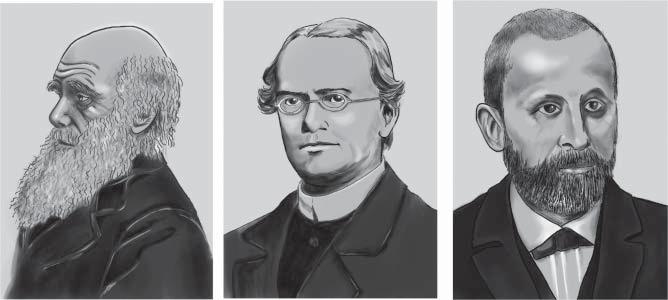
ErwinRudolfJosefAlexanderSchrödinger,whowasagreatphysicist,pioneered togoafterthemysteryofgene.Hepublishedabooktitled WhatIsLife?in1944[1]. Thisbookinvitedthestudyofthegenetomanyresearchers.Hementionedinthe bookthathebelievedagene–orperhapsthewholechromosomefiber–tobean aperiodicsolid,althoughhealsomentionedthatgeneisprobablyonebigprotein molecule.Afterthe1950s,chemistryregardingnucleicacidshadbeendeveloping. OneoftheorganicchemistswasErwinChargaff,whowasaprofessoratColombiaUniversityintheUnitedStatesandborninAustria.Hediscoveredthatfromthe resultofpaperchromatographytargetedtothedifferenttypesofDNA,thenumberof guanineunitsequalsthenumberofcytosineunitsandthenumberofadenineunits equalsthenumberofthymineunits[2].ItiscalledChargaff’srules.Ontheother hand,analysisofthesuperstructureofnucleicacidswasalsoproceeding.Atthe beginningofthe1950s,atKing’sCollegeLondon,theresultsofX-raycrystalanalysis wereaccumulatedbyMauriceHughFrederickWilkins,RosalindElsieFranklin,and others.Finally,basedontheirresult,WatsonandCrickwhoworkedatCavendish LaboratoryinCambridgeandproposedthemodelofdoublehelixstructureofDNA (Figure1.1andseeChapter2),publishedasasingle-pagepaperaboutDNAdoublehelixin Nature issuedon25April1953[3].BydiscoveringDNAdoublehelix structure,Watson,Crick,andWilkinswereawardedtheNobelPrizeinPhysiology orMedicinein1962.

Figure1.1 ThediffractionpatternofthecanonicalDNAduplexanditschemicalstructure.
Source:KingsCollegeLondon.
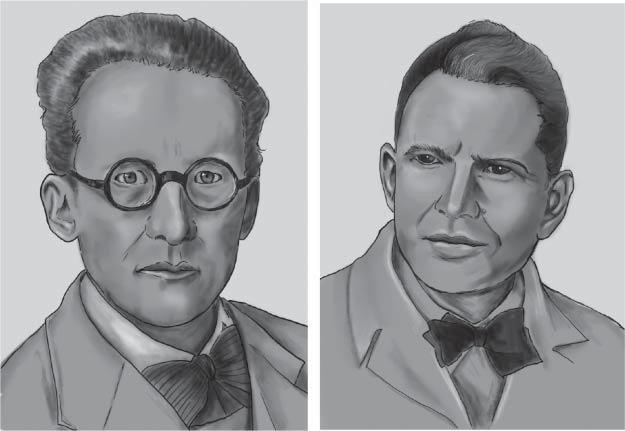


1.3Non-Watson–CrickBasePair
AlthoughthediscoveryofWatson–Crickbasepairsisfamous,weneedtomake surethatWatsonandCrickinitially“proposed”theirmodel.Moreover,Watsonand Crickwerenotthefirstresearcherswhoproposedthestructureofnucleicacids. ThephysicistLinusPauling,whoearnedtheNobelPrizetwotimesinhiscareer, firstproposedthehelixmodelofnucleicacidswithhisassociateRobertCorey[4]. However,thestructurewasfault:itwasatriplehelixhavingnegativelycharged phosphateslocatedatthecoreofthehelix,whichcouldnotexistinnature.After theproposalofWatson–Crickbasepairs,theracefordeterminationofthehelical structureofDNAhadbeenstartedusingpurineandpyrimidinemonomers.The firstsuchstudywasreportedin1959,whenKarstHoogsteen–anassociateofRobert CoreyatCaltech–usedsingle-crystalX-rayanalysistodeterminethestructuresof cocrystalscontaining9-methyladenineand1-methylthymine,wheremethylgroups wereusedtoblockhydrogenbondingtonitrogenatomsotherwisebondedtosugar carbonsinDNA[5].However,thestructurewasNOTWatson–Crickbasepair,in whichtheadeninebasewasflippedupsidedown.Thedifferentbasepairwaslater namedHoogsteenbasepair(Figure1.2andseeChapter2).Afterthediscoveryof
Watson–Crick basepair

Figure1.2 ChemicalstructuresofbasepairsviaWatson–CrickorHoogsteentypes.
6 1HistoryforCanonicalandNon-canonicalStructuresofNucleicAcids
Hoogsteenbasepairs,manyresearcherslookedforWatson–Crickbasepairs.However,onlyHoogsteenbasepairswereidentified.In1973,AlexanderRichfirstdiscoveredWatson–CrickbasepairsinthecocrystaloftheAUandGCdinucleoside phosphatecomplex[6].Andsoonafter,RichardE.Dickerson,whotookoverthe Pauling’slab,firstsolvedthesingle-crystalstructureofaDNAdodecamerusing heavyatomX-raycrystallographyin1980[7].Ittakesmorethan20yearsafterthe discoveryofWatson–Crickbasepairs.TheseresultssuggestthatWatson–Crickbase pairstendedtostablyformundertheconstraintofthehelicalstructureofnucleic acids,whereasHoogsteenbasepairsforminotherstructuralconditions.Therefore, therearecanonicalstructurescomposedbyWatson–Crickbasepairsintheduplex structures.Ontheotherhand,non-canonicalstructuresincludenon-Watson–Crick basepairssuchasHoogsteenbasepairs.


1.4NucleicAcidStructuresIncluding Non-Watson–CrickBasePairs
BehindtheextensiveeffortstoidentifytheduplexstructureofWatson–Crickbase pairs,Hoogsteenbasepairswerealsofoundinthestructureofnucleicacidsinthe 1960s.FelsenfeldandRichexplainedhowpoly(rU)strandsmightassociatewith poly(rA)-poly(rU)duplexestoformtriplexes[8].FromthechemicalshiftofNMR, theyidentifiedevidencefortriplexformationviaprotonatedG–C+ Hoogsteen basepairsatcytosineN3inapoly(dG)-poly(dC)complexwithdGMPatlow pH[9].In1962,itwasfoundthatshortguanine-richstretchesofDNAcould assumeunusualstructures[10].Thediffractionstudiesofpoly(guanylicacid)gels suggestedthatiffourguanineswerecloseenoughtogether,theycouldformplanar hydrogen-bondedarrangementsnowcalledguaninequartets(G-quartets).Witha stackofafewG-quartets,atetraplexstructureisformedcalledasG-quadruplex (seeChapter2).Inthecrystalstructure,Hoogsteenbasepairsofpolynucleic acidswerefirstfoundintRNAstructure[11].InthestructureWatson–Crickbase pairsformedthesecondarystructureoftRNA,whereasHoogsteenbasepairs supportedthetertiarystructure.NotonlyHoogsteenbasepairsbutalsoother typesofnon-Watson–CrickbasepairswerefoundintRNAstructures.Thetertiary structureofnucleicacidsisimportantespeciallyfornon-codingRNAs,which donotcodegeneticinformation.Thelandmarkofresearchofnon-codingRNA isthediscoveryofribozyme(ribonucleicacidenzyme)byThomasRobertCech in1982[12].Ribozymescatalyzechemicalreactionsaswellasproteinenzymes. Laterstructuralstudiesrevealedthattherearealotofnon-Watson–Crickbase pairstoproducetheactivecoreofenzymaticreactionofribozymes.Therefore, non-canonicalWatson–CrickbasepairsincludingHoogsteenbasepairshavebeen thoughtofasatoolforthetertiarystructureofnucleicacidsexceptforduplexes.

Withtheprogressofstructuralanalysistechnologyinthe1990s,Hoogsteen basepairsaregraduallyrevealedtoexistinDNAcomplexeswithlowmolecular weightcompoundsandproteinsaswellastransientlyinWatson–Crick-typedouble helix.Furthermore,anothertypeoftetraplexstructureswasidentifiedfromDNA sequenceenrichedincytosineduetothecrossintercalationsofhemiprotonated cytosine–cytosine(C–C+ )basepairsunderacidicconditions[13].Thistetraplex iscalledasi-motif(seeChapter2).Soonafter,therolesofthenon-canonical structureshavebeengainingattention.Especiallysincethe2000s,researchonthe G-quadruplexstructureformedfromHoogsteenbasepairshasmaderemarkable progress.WhenaG-quadruplexisformedonDNAorRNA,thereactivityofthe proteininvolvedingeneexpressionisaffected(seeChapters6–8).Thismeansthat thecentraldogmaproposedbyCrick–thatgeneticinformationisdetermined centrallybytheflowofreplication,transcription,andtranslation–ishighlycontrolledbytheformationofaG-quadruplexstructure.Ingeneral,ithasbeenthought thattheregulationofgeneinformationexpressionisduetoproteinfunctions. However,thespecificstructureofHoogsteenbasepairscontrolsgeneexpressionso thatthenucleicaciditselfcanfunctionlikeaprotein.Thatis,therolesofnucleic acidsmightbeproperlyusedaccordingtobasepairs:WatsonCrickbasepair = information,non-WatsonCrickbasepair = function.Manysequencesthatcan haveaG-quadruplexstructurearedistributedinthetelomereattheendofthe chromosomeandthepromoterregionoftheoncogeneofthegene.Startingwiththe 2013report,therehavebeenmanyreportsontheformationofG-quadruplexesand i-motifsincells.Thesereportspointoutthattheoncogenemaybeactivatedbythe formation(ordissociation)oftheG-quadruplextocausecancer(seeChapter11). Furthermore,ithasbeensuggestedthatthephase-separatedstructureformedby theaggregationofRNAswithG-quadruplexescontributestoneurologicaldiseases suchasamyotrophiclateralsclerosis(seeChapter12).
1.5PerspectiveoftheResearchforNon-canonical NucleicAcidStructures
Astheregulationofgeneexpressionbythespecificstructureofnucleicacidshas beenclarified,thenextimportantissueisknowingwhatspecificstructuresare formedwhereandwhenincells.Forexample,Hoogsteenbasepairsareaffected bythemolecularenvironmentssuchasions,pH,andwateractivity.Cellsareinan environmentcrowdedwithmolecules,so-calledmolecularcrowding(seeChapters 3and4),andthemolecularenvironmentchangesdependingonthecellcycle[14]. Forexample,thenucleoluscausesachangeinthemoleculardensityinthenucleus byrepeatingformationanddissociationaccordingtothecellcycle.Thisregulates thetimingofactivationofrRNAtranscriptionineachcellcycle,becausethe transcriptionofrRNAspecificallyoccursinnucleolus.Inaddition,theenvironment ofmitochondriaisparticularlycrowded(upto500mgml 1 )butheterogeneous duetolocallyincreasedprotonconcentrationbytheprotongradientrequiredfor ATPsynthesis.Therefore,itisdesirabletodevelopatechnologythatcanpredict
9 physicochemicalpropertyofspecificstructuresduetoHoogsteenbasepairsin eachcharacteristicmolecularenvironment[15].Inaddition,thereisapossibility tomakeanewapproachofdrugdevelopmentthattreatsdiseasesbychangingthe molecularenvironmentsofcells,ratherthantargetinggenesandproteins.
1.6ConclusionandPerspective
AccordingtoPauling’spersonalcommunicationrevealedbytheNobelFoundation’s disclosure,heconsideredWatsonandCrick’sNobelawardtobepremature.Inspite ofhisopinion,theNobelFoundationdecidedtoawardthePrizetoWatsonandCrick. ThismightsuggestthatWatson–Crickbasepairswereverycommonandmeaningful atthattimebutnon-Watson–Crickbasepairswereartifactandmeaningless.Nowadays,non-Watson–CrickbasepairsarebecomingcommonandsignificantasPauling perhapspredicted.Now,thedaywhentheessenceofnucleicacidsbecomesbeyond theconceptofWatsonandCrickiscomingcloser.
References
1 Schrödinger,E.(1944). WhatIsLife?ThePhysicalAspectoftheLivingCelland Mind.Cambridge:CambridgeUniversityPress.
2 Tamm,C.,Hodes,M.,andChargaff,E.(1952). J.Biol.Chem. 195:49–63.
3 Watson,J.D.andCrick,F.H.(1953). Nature 171:737–738.
4 Pauling,L.andCorey,R.B.(1953). Nature 171:346–346.
5 (a)Hoogsteen,K.(1959). ActaCrystallogr. 12:822–823.(b)Hoogsteen,K.R. (1963). ActaCrystallogr. 16:907–916.
6 (a)Day,R.O.,Seeman,N.C.,Rosenberg,J.M.,andRich,A.(1973). Proc.Natl. Acad.Sci.U.S.A. 70:849–853.(b)Rosenberg,J.M.,Seeman,N.C.,Kim,J.J. etal.(1973). Nature 243:150–154.
7 Wing,R.,Drew,H.,Takano,T.etal.(1980). Nature 287:755–758.
8 Felsenfeld,G.andRich,A.(1957). Biochim.Biophys.Acta 26:457–468.
9 Kallenbach,N.R.,Daniel,W.E.Jr.,andKaminker,M.A.(1976). Biochemistry 15: 1218–1224.
10 Gellert,M.,Lipsett,M.N.,andDavies,D.R.(1962). Proc.Natl.Acad.Sci.U.S.A. 48:2013–2018.
11 Robertus,J.D.,Ladner,J.E.,Finch,J.etal.(1974). Nature 250:546.
12 (a)Kruger,K.,Grabowski,P.J.,Zaug,A.J.etal.(1982). Cell 31:147–157. (b)Zaug,A.J.,Grabowski,P.J.,andCech,T.R.(1983). Nature 301:578–583.
13 Gehring,K.,Leroy,J.L.,andGueron,M.(1993). Nature 363:561–565.
14 Nakano,S.,Miyoshi,D.,andSugimoto,N.(2014). Chem.Rev. 114:2733–2758.
15 (a)Takahashi,S.andSugimoto,N.(2020). Chem.Soc.Rev. 49:8439–8468. (b)Takahashi,S.andSugimoto,N.(2021). Acc.Chem.Res. 54.Inpress.

